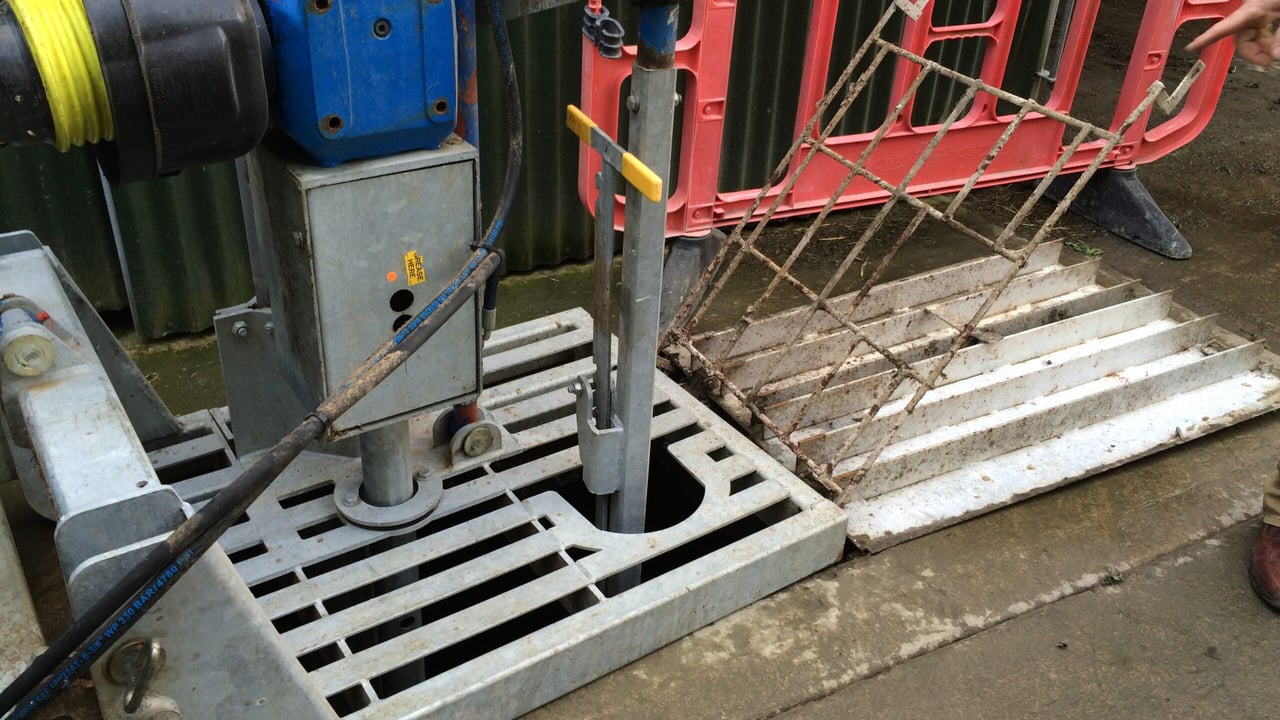Farm Safety Survivor Series


Farm Safety Survivor Series: Longford farmer overcome by slurry fumes
The second episode of the Farm Safety Survivor Series brought to you by Agriland, in association with AXA and the Department of Agriculture, Food and the Marine (DAFM), focuses on the risk of gas poisoning when agitating slurry.
In today's podcast, Agriland news journalist Rubina Freiberg speaks to Mervyn Clendenning from Co. Longford who fell unconscious after he was overcome by slurry fumes in 2021, and Health and Safety Authority (HSA) inspector, Jason Murray.
Clendenning had just started letting the cows out of the parlour when his local contractor started agitating. After noticing a smell, he went to leave the parlour but collapsed and fell down the stairs, cracking his head off the concrete floor.
Click on the video below for a preview of Clendenning's story.
Clendenning shares his full story of the farm accident and how it changed his thoughts on farm safety in the second Farm Safety Survivor Series podcast which is now live on the Agriland app, Spotify, Apple or wherever you get your podcasts.
HSA inspector, Jason Murray speaks about precautionary measures farmers should take when agitating slurry, the key safety actions farmers should take before handling slurry, and shares advice on best practice when inspecting slats.
Slurry presents two particular safety and health problems - drowning and gas poisoning. Drowning is by far the most common cause of death involving slurry. Children and the elderly are at particular risk, the HSA said.
Over the past 10 years, between 2014 and 2023, there have been seven deaths associated with slurry pits, according to latest HSA figures.
Smell is no indicator of the absence of gas, as many gases are odourless. Hydrogen sulphide has a 'rotten egg' smell at low levels, but cannot be smelt at higher levels.
High levels of hydrogen sulphide can be released when slurry is agitated. One breath or lung-full at this level causes instant death, according to the HSA.
The DAFM said the following precautions should be taken when agitating slurry:
- Only agitate when there is good air movement;
- Move all livestock out of the building(s);
- Make sure no person is in or near the building;
- Open all doors and outlets to provide a draught;
- At least two people should be present and stand upwind;
- Never stand over slats or near tank access points when agitation is in progress;
- Avoid vigorous agitation in confined places;
- Keep everyone away from the agitation point during agitation and for at least 30 minutes after agitation;
- There should be no one in the shed while the tank is being agitated and for at least 30 minutes after agitating has finished. This also applies to any building that shares a common airspace with it;
- Never enter or allow others to enter the tank or any confined place without breathing apparatus;
- Agitation points must be placed outside the building.
To protect yourself against drowning, the DAFM issues the following advice:
- Open slurry tanks should be protected by an unclimbable fence or wall at least 1.8m high with locked gates;
- Covered or slatted tanks require access manholes that children cannot open. A safety grid should be fitted below the manhole lid to give secondary protection.
The DAFM advises farmers to clean slats and inspect them annually for sagging, as well as inspecting safety manhole covers annually. Slats and manhole covers are not lifetime items and need to be replaced before they fail.
All slats and manhole covers should be carefully inspected for cracks and sagging and replaced as necessary. Attempting to rescue animals from slurry tanks is extremely dangerous and has resulted in the loss of multiple human lives.
The DAFM advises the following when inspecting slats:
- To inspect slats, use an inspection camera that is waterproof and fitted with a light;
- If slurry has been allowed to build up to the underside of the slats, the life of the slats will be significantly reduced;
- Every year, thoroughly clean the slatted floor, including any external manhole covers and examine the entire floor for sagging, cracking, rust staining and spalling of concrete;
- For single slats, suspect slats should be lifted, power washed and examined for cracks;
- Lengthways cracks on the side and underside and continuous crossways cracks are especially dangerous because they open up wider when under load;
- Don’t be tempted to leave single slats covering external agitation access points. Use a proper safety manhole slab designed for this purpose;
- Never drive over slats with tractors or machinery unless they have been designed for the purpose. Indeed, one could argue that heavy-duty slats should always be used instead of ordinary cattle slats.
Galvanised manhole covers also need to be inspected and replaced as necessary. The hinges on both the main cover and safety grid should be examined carefully to ensure that they are not worn or loose.
The hinges help to keep the cover and safety grid in the correct place and if they are worn, the covers may move and fall into the tank.
In every case, the grid under the main cover should be present. This is there to help when opening the main cover and allows a segment of the main cover to be open while having the vacuum pipe in the tank for emptying.
Both the frame set around the edge of the opening and the steel cover should be inspected for signs of any corrosion or pitting into the steel. Any holes or pitting are signs of the manhole cover weakening and it will potentially fail if put under any pressure.
Entering a slurry tank is a very dangerous job and should never be undertaken without a breathing apparatus or an external fresh air supply. Training is required in the use of this equipment, the DAFM said.
Alternatively, use an inspection camera that is waterproof and fitted with a light – this allows inspection of the slat without having to empty or enter the tank.
Never enter a slurry tank when you are alone, even with breathing apparatus. Always ensure that there are at least two people to assist you in case something goes wrong.
In addition to breathing apparatus, the person entering the tank should be connected by harness and lifeline to the two people outside the tank. The slurry tank should always be as empty as possible prior to anyone entering the tank.
Under no circumstances should there be any internal agitation points and it is best practice that external agitation points are not within an animal area.
Safety manhole covers within an animal area will have a significantly shorter workinglife than manhole covers that are not subjected to regular covering with slurry.
Where internal agitation points are present, all necessary work to move them outdoors should be undertaken.
The DAFM has specifications for the extension of concrete tanks to enable the provision of external agitation points in cases were the tank does not currently extend beyond the end of the shed.
Under no circumstances should external agitation points be roofed over to extend an animal house. There are alternatives to internal agitation points, the DAFM said.
